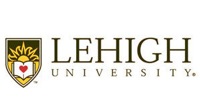Below is a summary of the abstract you submitted. Presenting author(s) is shown in bold.
If any changes need to be made, you can modify the abstract or change the authors.
You can also download a .docx version of this abstract.
If there are any problems, please email Dan at dar78@pitt.edu and he'll take care of them!
This abstract was last modified on March 17, 2021 at 12:52 a.m..

Lehigh’s SEA-PHAGES program is a collaborative research enterprise that provides opportunities for first year and advanced undergraduates to extend their discoveries and investigations about Actinobacter phage genome structural diversity, host-phage interactions, phage gene function, and phage biology in general. Our advanced phage group has investigated immunity mechanisms that protect cluster N lysogens from attack by heterotypic phages with a focus on cluster N Mycobacterium phage Butters. We have identified several Butters genes in the central variable region (CVR) of the genome that are part of the mechanism to differentially protect a Butters lysogen from infection by cluster A3 phage PurpleHaze and cluster I1 phage Island3. Butters genes 30 and 31 comprise a two component system required for defense against PurpleHaze, but not Island3 (Mageeney et al., 2020). Here, we report updates and new investigations undertaken by our advanced phage group. I. We have recently extended our interests in cluster N prophage biology to uncover genes required for defense by cluster N phage Smurph because its set of defenses extend over a larger and more diverse group of heterotypic phages compared to Butters. Deletion of Smurph genes 31-35 is in progress using Bacterial Recombineering Electroporated DNA (BRED) strategies. Mutant phages will be used to produce lysogens for use in immunity studies to compare plating efficiency profiles for heterotypic phages with profiles from a wildtype lysogen. Butters prophage-expressed gene 42 will also be deleted. II. The role of Kevin1 CVR genes 30 (predicted to encode a AAA ATPase) and 31 (an orpham of unknown function) are also of interest because of their uniqueness compared to other known cluster N phage genomes. Deletions of these genes using BRED followed by lysogen production and immunity investigations will be instrumental in determining if these specific genes affect immunity patterns that are specific to Kevin1. III. Other prophage-related investigations include comparisons of wildtype (Butters and Smurph) and mutant lysogen (lacking Butters gene 30) antibiotic sensitivities to kanamycin as well as the effects on growth characteristics and antibiotic sensitivity in M. smegmatis strains expressing Butters genes 30, 31, or 30/31. Preliminary results suggest that antibiotic sensitivity can be manipulated by deletion of Butters gene 30 in the lysogen. IV. Other advanced students are engaged in bioinformatics projects to uncover potential differences in genome organization and protein alignments that may account for the inability of newly annotated cluster A1 phage Gyzlar to form a stable lysogen. These investigations highlight ongoing research undertaken by Lehigh’s advanced SEA-PHAGES students to broaden our understanding of phage-host interactions, phage gene expression, and phage genomic diversity.

